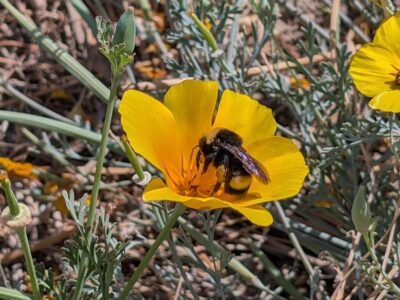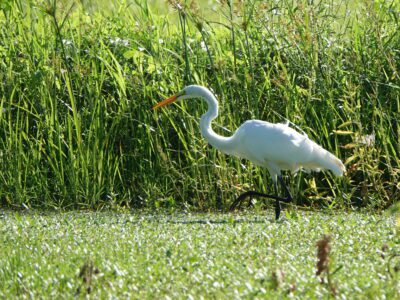- In partnership with the CA Dept. of Water Resources, River Partners completed one of the largest Bay-Delta freshwater tidal marsh restoration projects in state history.
- The project involved transforming a 1,200-acre cattle ranch into a wildlife haven at the confluence of the Sacramento and San Joaquin rivers.
- Nearly 20 years in the making, the project establishes a model for Bay-Delta restoration that benefits a trove of imperiled species, local communities, and the collective understanding of how to maximize future Delta restoration.
Even just 200 years ago, the vast Sacramento-San Joaquin Delta supported an expansive fresh-water tidal marshland host to hundreds of interconnected animal species. European settlers diked and drained these marshes for agriculture starting in the Gold Rush era. By the late twentieth century, virtually all of these wetlands were destroyed for agriculture and developers were proposing new housing developments where the tide once ebbed and flowed.
Back in 1998, River Partners’ Director of Conservation, John Cain (then with another California-based conservation nonprofit) was working to identify tidal marsh restoration opportunities to help restore some of the richness of the Delta. At Dutch Slough near the town of Oakley, CA north of Stockton, Cain was struck by inspiration.

“When I walked along Lower Marsh Creek, it was obvious to me that this was a relatively easy opportunity to restore a large area of fresh water tidal marsh. There was one major problem, however. The site had been approved for development of 4,500 homes.,” said Cain. “The Delta used to be home to roughly 360,000 acres of tidal marsh and all the animal life they supported. Sadly, there’s only about 2% left at the most and urban development would have eliminated any hope for restoration”
A Vision Realized
Nearly two decades later, Cain’s vision has been realized.
River Partners recently celebrated the restoration of approximately 700 acres of the 1,200-acre Dutch Slough in partnership with the Department of Water and Resources (DWR). It’s one of the largest freshwater tidal marsh restoration sites in the Delta and part of DWR’s California EcoRestore initiative, which aims to restore 30,000 acres of critical habitat in the Delta to rebuild dwindling populations of native wildlife, including migratory birds and fish.
The transformation required heavy equipment—as well as hand tools for the smaller-scale work that required a more detailed and delicate touch—installing miles of irrigation piping and planting more than 75,000 native tule plugs and other plants to revegetate the marsh.
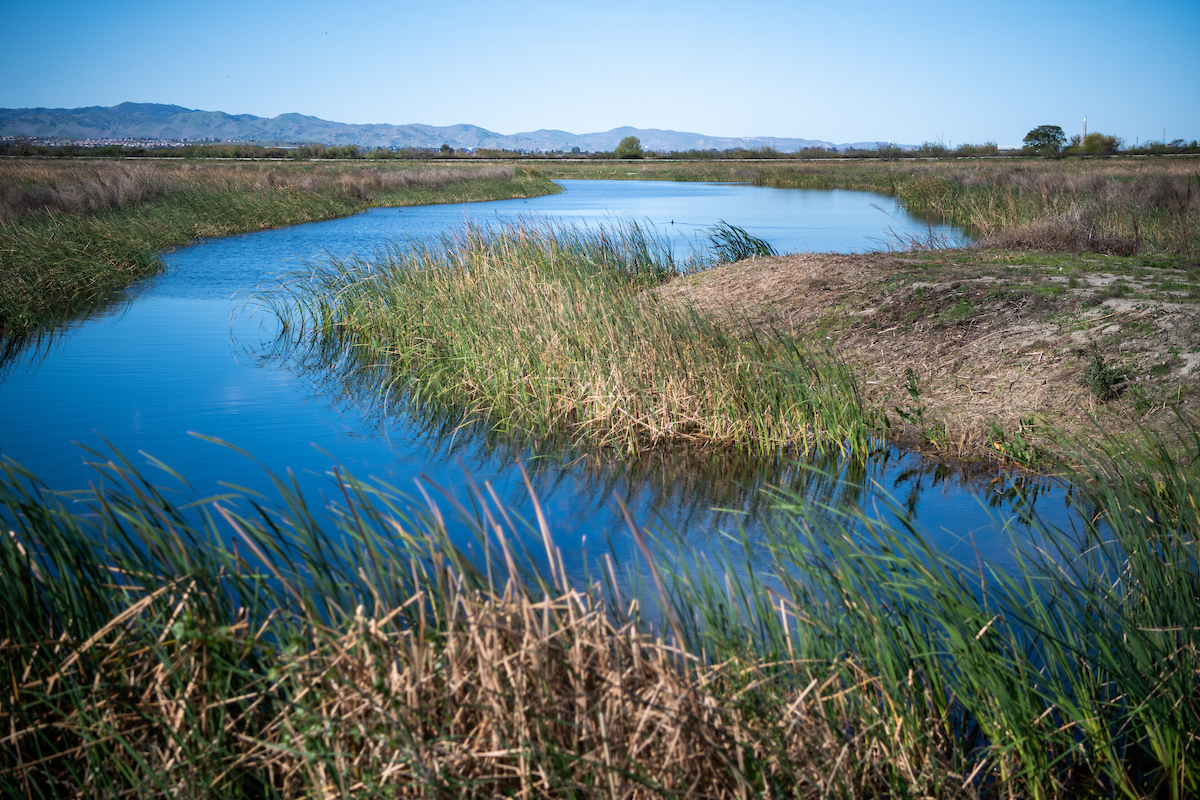
DWR Project Manager Katherine Bandy was quick to credit River Partners and its expertise and can-do approach, calling the team “the hardest-working people I’ve ever met.”
“This project was a pretty lofty goal,” Bandy said. “We had expectations of a massive amount of planting that would have been daunting under any normal circumstances—and then you throw in a COVID shutdown and impacts on top of that last year … they had the ability to adapt and push through an insanely challenging time. I don’t really know if we’d be in the same position if we had anyone else to work with.”
A Homecoming for Struggling Wildlife
Now that native vegetation and tidal flows have been restored, the wildlife that had long called this area home—before humans drained and diked the area for agriculture— have quickly returned. The arrival of thousands of birds and other wildlife fascinated Bandy’s biology background and appealed to the reasons why she does the work.
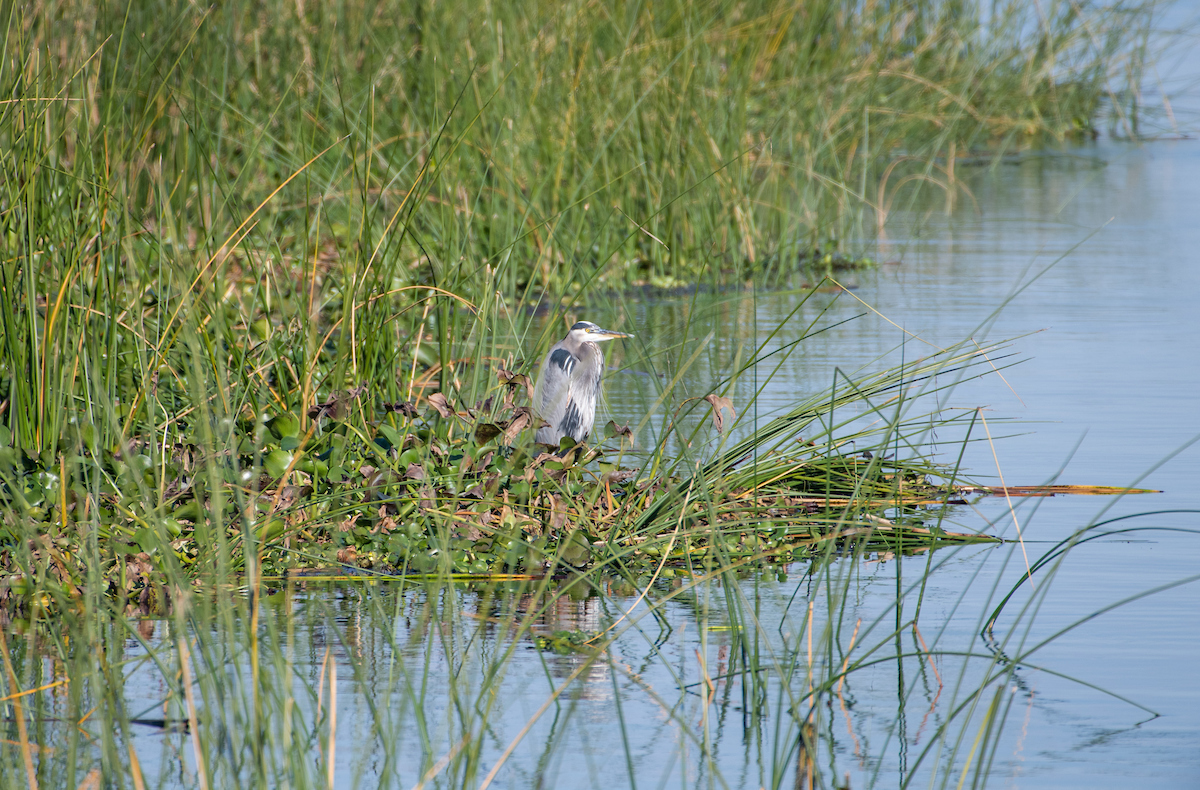
“It kind of gets at the little kid in me, just always having that passion of wanting to learn more about critters and protect their environment,” she said. “Being there at the precise moment where the transition happens, it’s awe-inspiring to see the wildlife show up so eager to have more places like this that they are able to cue in immediately, find it, and show up.
“As a biologist, this is the ultimate.”
Cain said it has been stunning to witness wildlife move in and use Dutch Slough so quickly. “It’s only been a year-and-a-half since it was bare dirt,” Cain said. “We saw a large flock of white pelicans, multiple raptors flying overhead, and in any season of the year, the place is alive with insects and bird life. We may not be able to create the conditions that work for every species that we need to recover, but we know that simply bringing back native vegetation and water brings back lots of wildlife.”
The public will be able to experience the rejuvenated ecosystem and return of wildlife firsthand through a network of walking and hiking paths, as well as observation areas, across the expansive site.
A Case Study for Future Restoration
Planning for the project began in 2003, after DWR and other project proponents purchased the land and acquired grants to begin the work. River Partners was soon subcontracted to lead the restoration work. Labeled a “living laboratory,” a primary goal of the Dutch Slough project was to learn about restoration and management techniques to maximize the return on future Delta restoration.
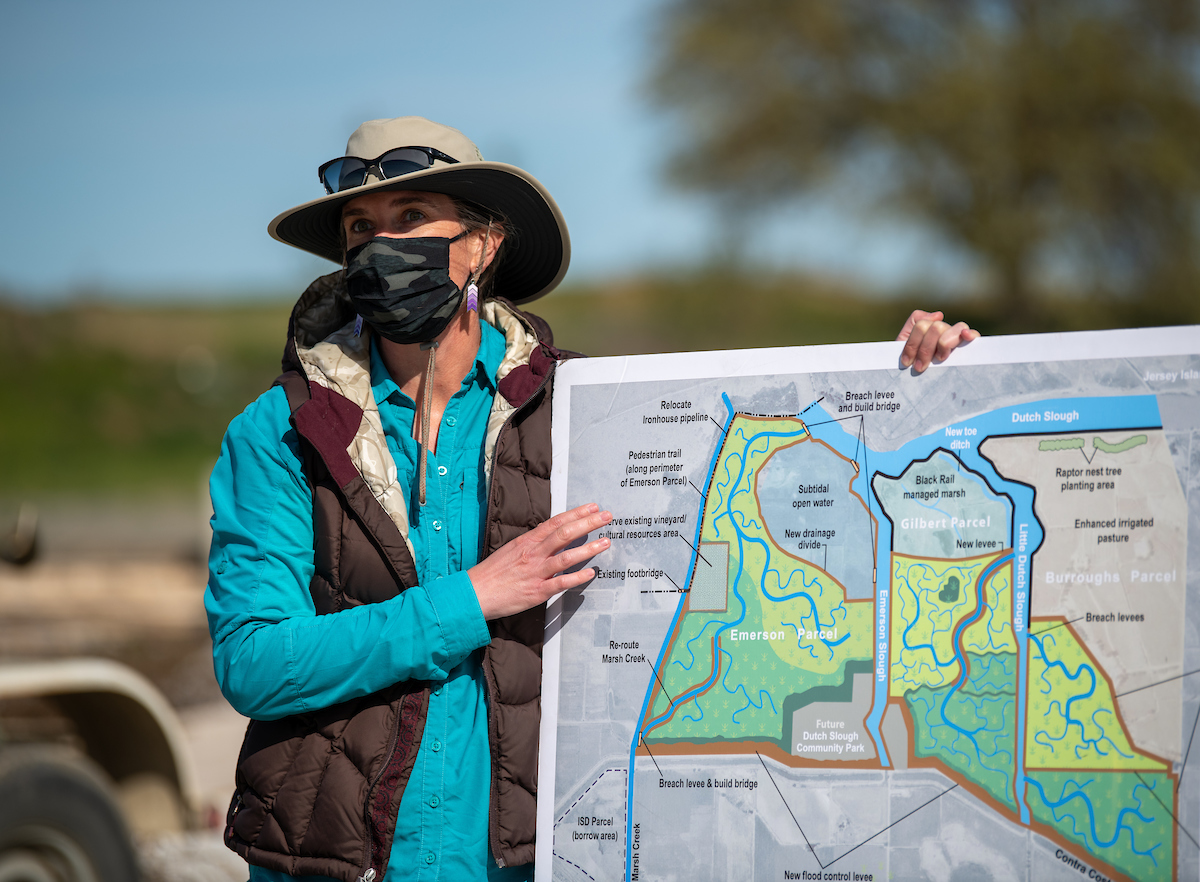
“This is the first of a few projects where we were asked to do restoration in the Delta, where we’re restoring a different assemblage of plants more associated with marsh vegetation and the woody and flowering plants around the edges,” said Cain. “It’s an opportunity for us to move our skillset into the Delta.”
Even though River Partners’ part in the project is complete, Cain acknowledges the work is not necessarily done—nor is the research. Just two weeks ago, DWR began breaching five of the decades-old earthen levees across the site to allow water from the Delta to once again flow in and out with the daily tides. Cain added that the Dutch Slough project was designed with an adaptive management approach to determine what particular attributes of tidal marsh are particularly beneficial to native fish, something researchers will study to inform future restoration.
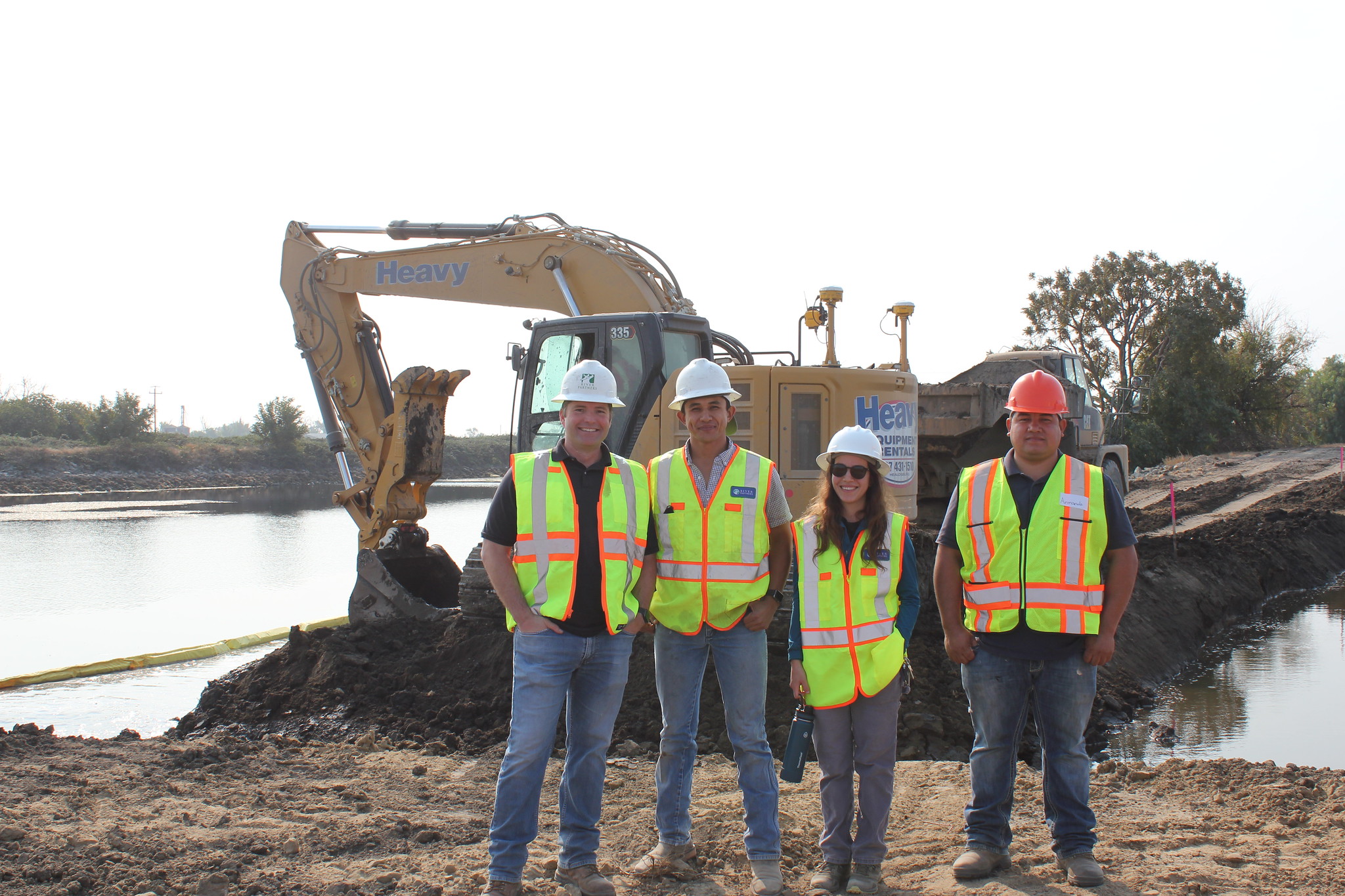
“It’s not over, there are so many more things to learn and so many more people to get out to the site, including the public because community access was designed into the project from the beginning,” Cain said. “We’re farmers, we don’t finish this year’s crop and say we’re done. Environmental stewardship is the same way—we’re always trying to find ways to get better at it and every time we finish one milestone, we’re looking to what we need to do next.”
The historic Dutch Slough restoration was made possible through generous funding and support from: California EcoRestore, the U.S. Environmental Protection Agency, U.S. Fish and Wildlife Service, State Coastal Conservancy, California Department of Fish and Wildlife, City of Oakley, Contra Costa Water District, Sacramento-San Joaquin Delta Conservancy, Natural Heritage Institute, American Rivers, and Reclamation District 2137.



